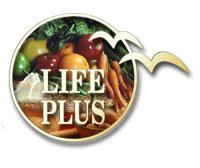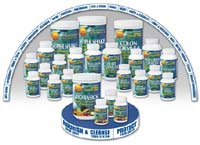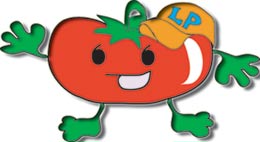| Article Presented by Jean Sapp
TIME INVESTED
Author Unknown
Jean Thompson stood in front of her fifth-grade class on the very first day of school in the fall and told the children a lie. Like most teachers, she looked at her pupils and said that she loved them all the same, that she would treat them all alike. And that was impossible because there in front of her, slumped in his seat on the third row, was a little boy named Teddy Stoddard.
Mrs. Thompson had watched Teddy the year before and noticed he didn't play well with the other children, that his clothes were unkempt and that he constantly needed a bath. And Teddy was unpleasant. It got to the point during the first few months that she would actually take delight in marking his papers with a broad red pen, making bold X's and then marking the F at the top of the paper biggest of all.
Because Teddy was a sullen little boy, no one else seemed to enjoy him, either. At the school where Mrs. Thompson taught, she was required to review each child's records and put Teddy's off until last. When she opened his file, she was in for a surprise.
His first-grade teacher wrote, "Teddy is a bright, inquisitive child with a ready laugh. He does his work neatly and has good manners . . . he is a joy to be around."
His second-grade teacher wrote, "Teddy is an excellent student well-liked by his classmates, but he is troubled because his mother has a terminal illness and life at home must be a struggle."
His third-grade teacher wrote, "Teddy continues to work hard but his mother's death has been hard on him. He tries to do his best but his father doesn't show much interest and his home life will soon affect him if some steps aren't taken."
Teddy's fourth-grade teacher wrote, "Teddy is withdrawn and doesn't show much interest in school. He doesn't have many friends and sometimes sleeps in class. He is tardy and could become a problem."
By now Mrs. Thompson realized the problem but Christmas was coming fast. It was all she could do, with the school play and all, until the day before the holidays began and she was suddenly forced to focus on Teddy Stoddard.
Her children brought her presents, all in beautiful ribbon and bright paper, except for Teddy's, which was clumsily wrapped in the heavy, brown paper of a scissored grocery bag.
Mrs. Thompson took pains to open it in the middle of the other presents. Some of the children started to laugh when she found a rhinestone bracelet with some of the stones missing, and a bottle that was one-quarter full of cologne. She stifled the children's laughter when she ex-claimed how pretty the bracelet was, putting it on, and dabbing some of the perfume behind the other wrist.
Teddy Stoddard stayed behind just long enough to say, "Mrs. Thompson, today you smelled just like my mom used to." After the children left she cried for at least an hour.
On that very day, she quit teaching reading, and writing, and speaking. Instead, she began to teach children. Jean Thompson paid particular attention to one they all called "Teddy." As she worked with him, his mind seemed to come alive. The more she encouraged him, the faster he responded. On days there would be an important test, Mrs. Thompson would remember that cologne. By the end of the year he had become one of the smartest children in the class and . . . well, he had also become the "pet" of the teacher who had once vowed to love all of her children exactly the same.
A year later she found a note under her door, from Teddy, telling her that of all the teachers he'd had in elementary school, she was his favorite. Six years went by before she got another note from Teddy. He then wrote that he had finished high school, third in his class, and she was still his favorite teacher of all time. Four years after that, she got another letter, saying that while things had been tough at times, he'd stayed in school, had stuck with it, and would graduate from college with the highest of honors. He assured Mrs. Thompson she was still his favorite teacher. Then, four more years passed and yet another letter came. This time he explained that after he got his bachelor's degree, he decided to go a little further. The letter explained that she was still his favorite teacher but that now his name was a little longer. The letter was signed, Theodore F. Stoddard, MD.
The story doesn't end there. You see there was yet another letter that Spring. Teddy said he'd met this girl and was to be married. He explained that his father had died a couple of years ago and he was wondering . . . well, if Mrs. Thompson might agree to sit in the pew usually reserved for the mother of the groom. And guess what, she wore that bracelet, the one with several rhinestones missing. And I bet on that special day, Jean Thompson smelled just like . . . well, just like the way Teddy remembered his mother smelling on their last Christmas together.
THE MORAL: You never can tell what type of impact you may make on another's life by your actions or lack of action. Consider this fact in your venture through life. Imagine there is a bank that credits your account each morning with $86,400. It carries over no balance from day to day. Every evening it deletes whatever part of the balance you failed to use during the day. What would you do? Draw out every cent, of course!
Each of us has such a bank. Its name is TIME. Every morning, it credits you with 86,400 seconds. Every night it writes off, as lost, whatever of this you have failed to invest to good purpose. It carries over no balance. It allows no overdraft. Each day it opens a new account for you. Each night it burns the remains of the day. If you fail to use the day's deposits, the loss is yours. There is no going back. There is no drawing against the "tomorrow". You must live in the present on today's deposits. Invest it so as to get from it the utmost in health, happiness and success! The clock is running. Make the most of today.
To realize the value of ONE YEAR, ask a student who failed a grade.
To realize the value of ONE MONTH, ask a mother who gave birth to a premature baby.
To realize the value of ONE WEEK, ask the editor of a weekly newspaper.
To realize the value of ONE DAY, ask a daily wage laborer with kids to feed.
To realize the value of ONE HOUR, ask the lovers who are waiting to meet.
To realize the value of ONE MINUTE, ask a person who missed the train.
To realize the value of ONE SECOND, ask a person who just avoided an accident.
To realize the value of ONE MILLI-SECOND, ask the person who won a silver medal in the Olympics.
Treasure every moment that you have! And treasure it more because you shared it with someone special, special enough to spend your time. And remember that time waits for no one. Yesterday is history. Tomorrow a mystery. Today is a gift . . . that's why it's called the present!
|





 Meet Three New PhytoZyme Characters as they Underscore the Importance of Fruits, Vegetables and Phytonutrients.
Meet Three New PhytoZyme Characters as they Underscore the Importance of Fruits, Vegetables and Phytonutrients.







